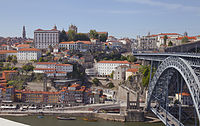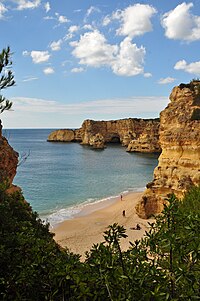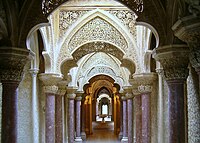
Back السياحة في البرتغال Arabic Cestovní ruch v Portugalsku Czech Tourismus in Portugal German Tourisme au Portugal French პორტუგალიის ტურიზმი Georgian Turismo em Portugal Portuguese Туризм в Португалии Russian Portekiz'de turizm Turkish Туризм у Португалії Ukrainian Portugaliyada turizm Uzbek













Tourism in Portugal serves millions of international and domestic tourists. Tourists visit to see cities, historic landmarks, enjoy beaches, or religious sites. As of 2023, Portugal had 26.5 million international visitors. In addition, there were also 11 million trips made by Portuguese residents including overnight stays at local hotels.[1][2]

The most popular destinations are Lisbon, Porto, the Algarve, the Portuguese Riviera, Madeira, Braga, Guimarães, Sintra, Óbidos and Fátima. The most popular with internationals were Lisbon, the Algarve and Northern Portugal (Porto, Braga and Guimarães). National tourists prefer Northern Portugal, followed by Central Portugal and the Algarve.[3]